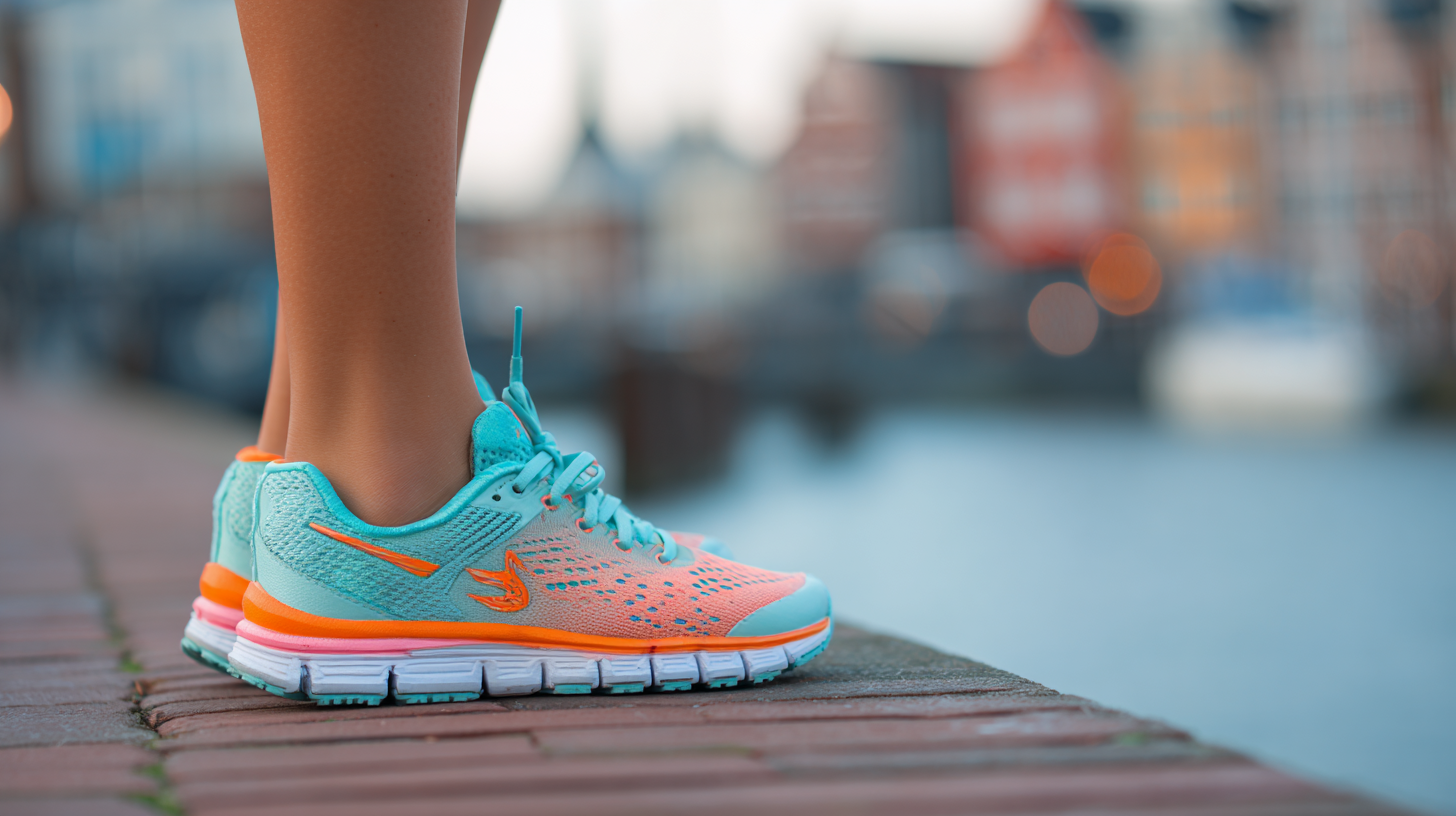
 Choosing the right running shoes is crucial for every woman who strives to achieve her
fitness goals while ensuring comfort and safety. With a booming global
running shoe market projected to surpass $15 billion by 2025, it becomes imperative for consumers to navigate
this complex landscape effectively. According to recent studies, women-specific running shoes account for nearly 25% of total running shoe sales,
indicating the rising demand for products tailored to female athletes. Additionally, factors such as
arch support, cushioning, and fit can significantly impact a runner's performance
and injury risk, with experts stating that up to 79% of runners may experience injuries
due to improper footwear. This data-driven guide aims to empower women globally to make informed choices in selecting their ideal
running shoes, enhancing their running experience while minimizing discomfort and injury.
Choosing the right running shoes is crucial for every woman who strives to achieve her
fitness goals while ensuring comfort and safety. With a booming global
running shoe market projected to surpass $15 billion by 2025, it becomes imperative for consumers to navigate
this complex landscape effectively. According to recent studies, women-specific running shoes account for nearly 25% of total running shoe sales,
indicating the rising demand for products tailored to female athletes. Additionally, factors such as
arch support, cushioning, and fit can significantly impact a runner's performance
and injury risk, with experts stating that up to 79% of runners may experience injuries
due to improper footwear. This data-driven guide aims to empower women globally to make informed choices in selecting their ideal
running shoes, enhancing their running experience while minimizing discomfort and injury.
Understanding your foot type is crucial when selecting the best running shoes, as it significantly impacts comfort and performance. Studies suggest that approximately 70% of runners have some form of foot misalignment, which can lead to injuries if not addressed with the right footwear. According to the American Podiatric Medical Association, a proper shoe fit can reduce the risk of common running-related injuries by up to 50%. This highlights the importance of knowing whether you have flat, neutral, or high-arched feet.
Identifying your foot type is as simple as performing a wet test: wet your foot and step on a piece of paper to see your footprint's shape. This will help classify your arch type. Research indicates that runners with flat feet often benefit from stability or motion control shoes, while those with high arches tend to do better with cushioned models that provide ample support. In a survey conducted by Running USA, 65% of women reported that the right shoe type improved their overall running experience, validating the connection between foot type and shoe choice. Taking the time to assess your foot type will enhance your running efficiency and enjoyment, allowing you to stay active and pain-free.
When choosing the best running shoes for women, several key factors should guide your decision. First and foremost, consider your foot type and gait. Understanding whether you have flat, neutral, or high arches will influence the type of support and cushioning you need. A shoe that complements your foot shape will enhance comfort and reduce the risk of injury, making it essential to get a proper fitting at a specialized running store.
Another critical aspect to assess is the terrain on which you plan to run. Trail runners, for instance, require shoes with deeper treads and more rugged construction for better traction, while road runners may benefit from lightweight, cushioned options designed for smooth surfaces. Additionally, pay attention to the shoe's weight and flexibility; a lighter shoe can improve speed, while a flexible design allows for natural foot movement. By carefully evaluating these factors, you can ensure that you invest in a pair of running shoes that will support your fitness goals and personal style effectively.

When choosing the best running shoes for women, it is essential to consider factors such as comfort, support, and fit tailored specifically to women’s biomechanics. Recent data highlights that shoes designed specifically for women provide improved heel fitting and arch support, ensuring a better running experience. In 2025, comprehensive wear and lab tests identified the best models that successfully blend these elements, such as lightweight options for speed and cushioned varieties for long-distance training.
Among the standout choices, specific models are noted for their suitability for high-performance tasks, such as racing or tackling marathons. A report revealed that the top-rated running shoes feature innovative designs that enhance speed and cushioning, accommodating various running styles and foot types. Additionally, for beginners, our research indicates that well-structured models recommended by experts help ensure a natural running gait, reducing the risk of injuries. The market is increasingly diversifying to meet the specific needs of women runners, moving away from generic adaptations of men’s designs, thereby paving the way for products that truly embrace the unique characteristics of female runners.
| Shoe Model | Weight (oz) | Drop (mm) | Price ($) | Best For |
|---|---|---|---|---|
| Model A | 7.5 | 10 | 120 | Road Running |
| Model B | 8.0 | 8 | 140 | Trail Running |
| Model C | 6.8 | 12 | 130 | Marathon Training |
| Model D | 7.2 | 6 | 110 | Casual Running |
| Model E | 9.0 | 4 | 150 | All-Purpose |
When selecting the best running shoes for women, the focus on cushioning, support, and flexibility is paramount for optimal performance. A recent comprehensive review on the 7 Best Cushioned Running Shoes highlighted that effective cushioning not only enhances comfort but also absorbs impact, reducing the risk of injury. Shoes with advanced cushioning technologies can provide a soft, responsive feel, allowing runners to tackle longer distances without discomfort.
Tips: Look for shoes that feature multi-layered cushioning systems; these are designed to offer both plush comfort and energy return. When considering support, opt for models that cater specifically to your foot arch type—neutral, overpronation, or underpronation—to ensure proper alignment and stability during your runs. Flexibility is also crucial—the right shoe should bend with your foot while maintaining enough structure to deliver support where needed.
Additionally, take into account scientific findings that suggest runners benefit from shoes that provide a balance of lightweight materials and robust traction for enhanced performance on various terrains. Incorporating such factors into your decision-making will lead you to shoes that not only feel great but also elevate your running experience.

When it comes to selecting the right running shoes, the testing and breaking-in process is fundamentally important in ensuring you avoid injury and maximize comfort. A recent survey indicated that about 30% of runners experience injuries due to improper footwear. Consequently, it is vital to understand how to assess new shoes effectively. Start by running indoors on a soft surface, approximately 10-15 minutes, to gauge immediate comfort levels. Pay attention to how your feet feel inside the shoes, ensuring there are no pressure points or rubs that could lead to blisters later on.
Moreover, research shows that it takes an average of 30 to 50 miles to properly break in new running shoes. During this initial phase, alternating between new and well-worn pairs can help your body adjust without straining your muscles and joints. As more people adopt running as a part of their healthy lifestyle, understanding these practices will become increasingly pertinent. Expertise in fitting and properly testing running shoes can make a significant difference in both performance and enjoyment of the activity, significantly reducing the risk of injuries associated with poorly fitted footwear.
